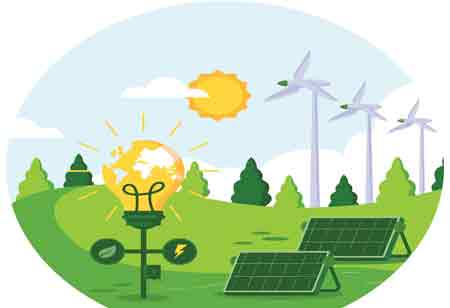Thank you for Subscribing to Electrical Business Review Weekly Brief
I agree We use cookies on this website to enhance your user experience. By clicking any link on this page you are giving your consent for us to set cookies. More info
The Role of Power Converters in Renewable Energy Solutions
An oscillator is an electrical circuit made up of transistors and other semiconductor devices that generate an alternating signal from a modest DC voltage source.

By
Electrical Business Review | Wednesday, October 15, 2025
Stay ahead of the industry with exclusive feature stories on the top companies, expert insights and the latest news delivered straight to your inbox. Subscribe today.
FREMONT, CA: A power converter is an electrical circuit that transforms electrical energy from one form to another, typically through a high-frequency switching action. This conversion can occur from direct current to alternating current or from alternating current to direct current in order to increase or decrease voltage or change polarity.
In addition, the converter serves as a connection between the power source and the power supply output. It processes and controls the flow of electric energy by supplying currents and voltage in the appropriate form for end-user loads. Converters can be as simple as a transformer or as complicated as needed for the purpose.
Types of power converters are as follows:
AC to DC converters: Switching from alternating to direct currents is an important step in electrical conversion. The applications, known as AC-DC converters, convert alternating current to direct, one-directional current. Transformers modify the AC source, lowering the voltage for a wider working range of the DC supply. This transition from alternating to direct current has become substantial in recent years due to the abundance of equipment in houses requiring DC to charge.
Rectification is the process of converting alternating electricity to direct current, and the device used is known as a rectifier. In addition, a series of diodes convert the alternating current supply to direct current. This converts the sinusoidal AC wave to a succession of positive peaks. A transformer converts the current from the source to a more controllable voltage for use with a direct current supply.
Most household appliances, including refrigerators, laptops, and televisions, require AC-DC converters, as do chargers for handheld electronics like cell phones and tablets. AC-DC converters are also important in medical equipment, the aerospace industry, and transportation systems. They are commonly utilized in both household and industrial settings.
DC to AC converters: Direct current to alternating current is perhaps a less common conversion. An inverter is a device that converts a straight, one-directional current into an alternating, reversed current. DC to AC converters can be designed in various ways. One common way is to use an oscillator and a step-up transformer.
An oscillator is an electrical circuit made up of transistors and other semiconductor devices that generate an alternating signal from a modest DC voltage source. The AC signal can then be amplified using a step-up transformer to achieve the necessary voltage magnitude.
AC to AC converters: AC to AC converters are devices that convert alternating current waveforms from one form to another. The output voltage and frequency are controlled based on the device's usage and specifications. One approach to accomplish this is to utilize special semiconductor devices such as thyristors to turn on and off the input voltage supply in a circuit, allowing the average voltage at the output to vary depending on the application.








